
What Causes a Tsunami? 10 Deadliest Tsunamis in History!
A Tsunami is one of the most dangerous and destructive natural disasters. It is so fast and huge that it can swallow up islands and wipe out entire coastal villages or towns. But what actually is it? How is it formed?
What Is a Tsunami?
A tsunami is a large ocean wave that is caused by an underwater earthquake or a volcanic explosion.
How Are Tsunamis Formed?
Tsunamis are formed when something called tectonic plates in the Earth’s crust grind together. They are usually referred to as crying together. Sometimes these plates get stuck, the pressure gets up,and soon they slam into a new position.
This causes an earthquake. If an earthquake lifts or drops part of the ocean floor, the water above rises and starts spreading across the ocean. This is what causes a tsunami. Underwater landslides or volcanic eruptions can also cause water to spread across the ocean, and may lead to a tsunami.
Tsunami Features
Out in the open ocean, tsunami waves are only about one-meter high because the water is deep. However, as the water becomes shallow, the waves slow down and become bigger and bigger. They can rise to 35 meters or even higher.
A tsunami in general is a scary thing, but the scariest thing about it might be its wavelength. The wavelength determines how far inland it can travel.
A large wave caused by wind might have a wavelength above 150 meters, but a tsunami could actually reach up to 1,000 km. Tsunamis are also very fast. They could race across the ocean at an incredible 970 km per hour.
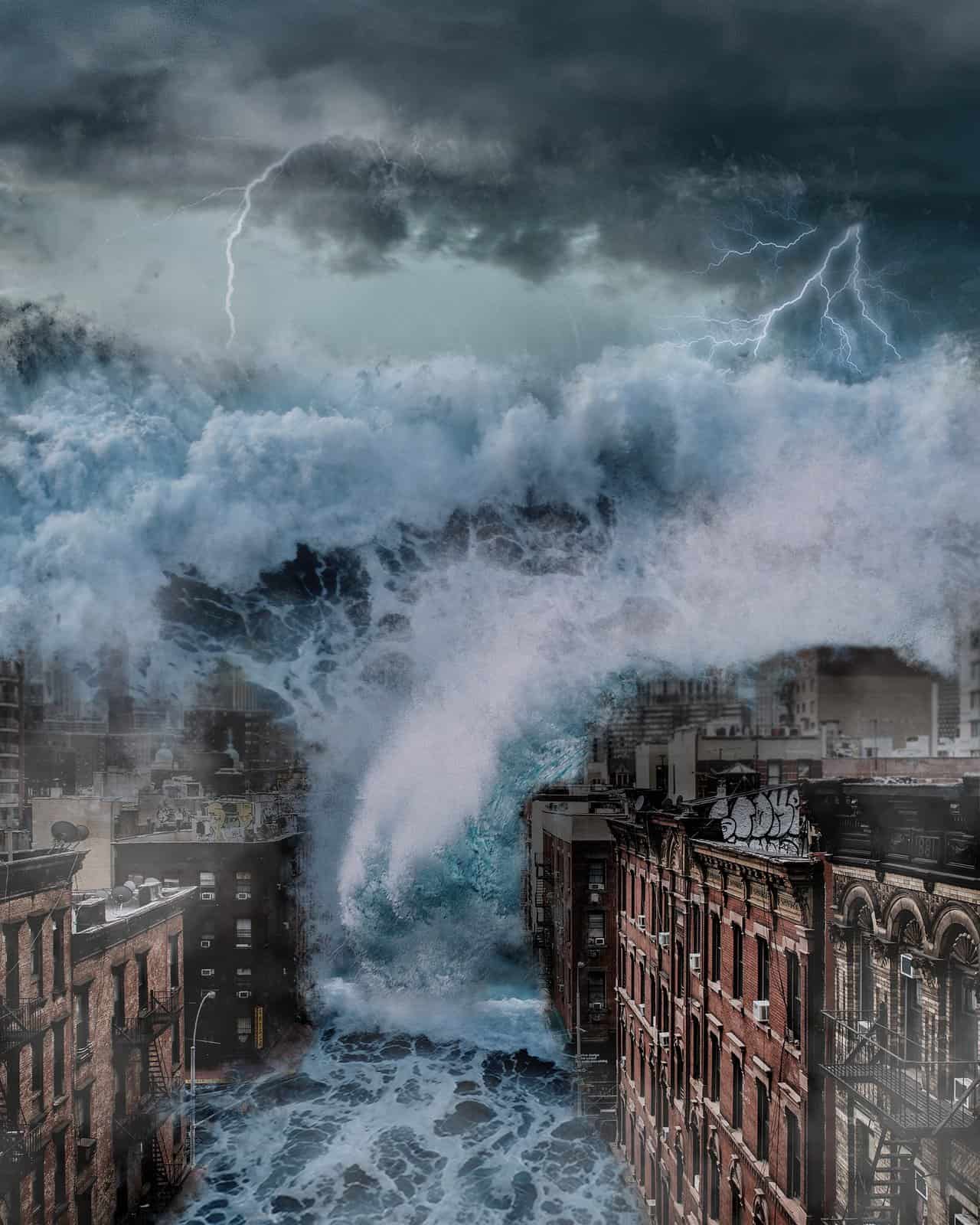
What Does the Word “Tsunami” Mean?
Tsunami is a Japanese word meaning “a great harbor wave”. The word might sound a little bit funny for kids, but it actually carries its meaning which originally comes from Japan.
Differences Between Tsunamis and Tidal Waves
A tsunami is not a tidal wave. Tidal waves are caused by the forces of the sun, moon and planets upon the tides, as well as the wind as it moves over the water. With typical waves, water flows in circles, but with a tsunami, water flows straight. This is why tsunamis cause so much damage.
Differences Between a Tsunami and a Flood
First, tsunamis are a series of waves, while floods are water overflows. A tsunami occurs because of underwater earthquakes or volcanic eruptions.
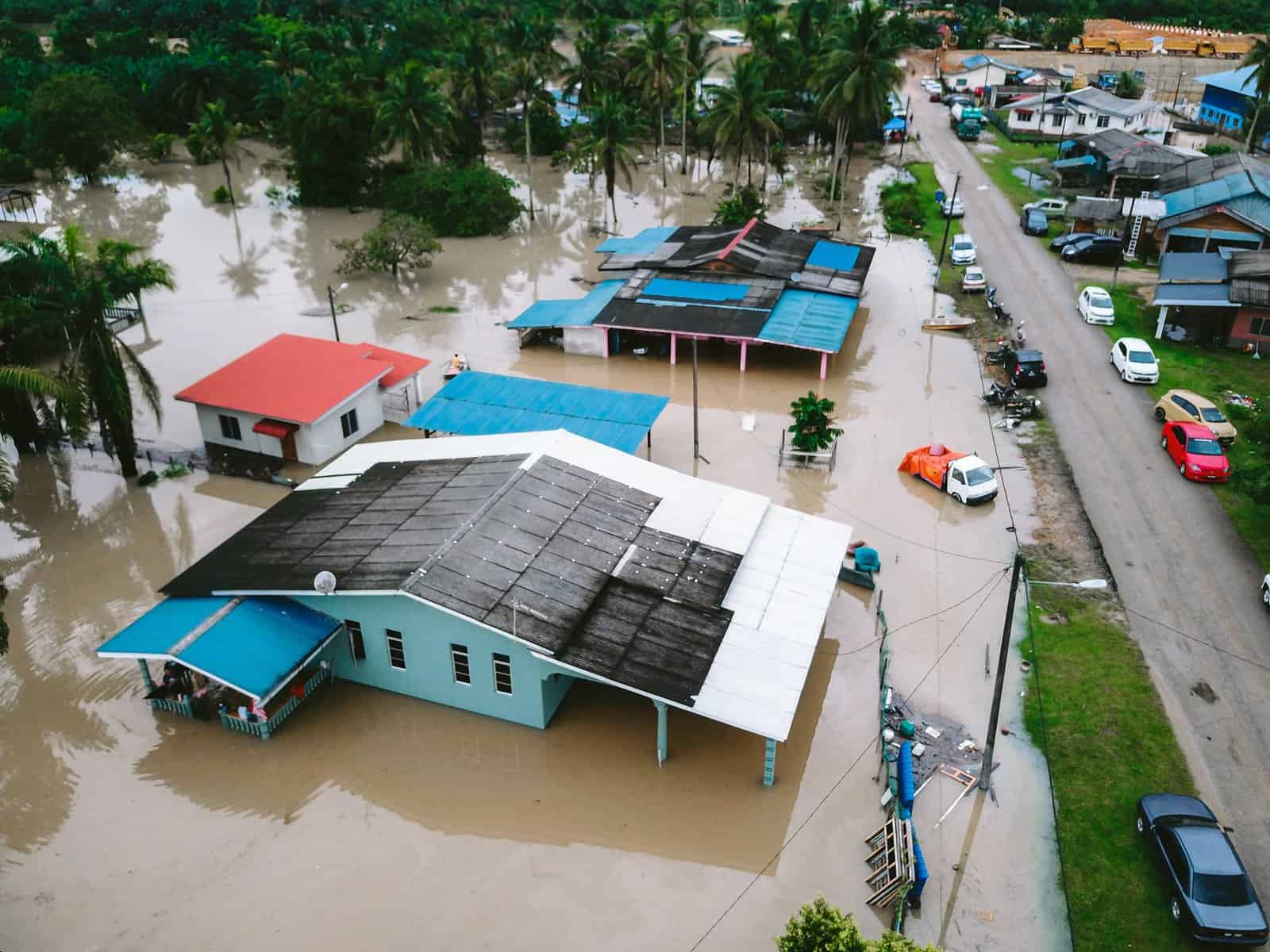
As for floods, they are caused by having large volumes of water like lakes, ocean or rivers, heavy rainfalls, or serious snow melting. Finally, tsunamis usually happen in Pacific areas, while floods usually occur in areas that have flat and broad lands that are near any waterways or bodies of water.
Differences Between a Tsunami and a Hurricane
A hurricane is a large storm that forms in the atmosphere over warm ocean water. A tsunami is large waves caused by underwater earthquakes or volcanic eruptions.
Both of them are very dangerous and destructive, but overall hurricanes have probably caused more damage and deaths.
Differences Between a Tsunami and a Tornado
While a tsunami is a very large wave caused by an underwater earthquake or volcanic eruption, a tornado is a violent windstorm that has a twisting, funnel-shaped cloud.
Tsunamis form large waves, while tornadoes form large columns of rotating air. In addition, tornadoes are primarily funnel shaped, but tsunamis come in the form of tidal waves.
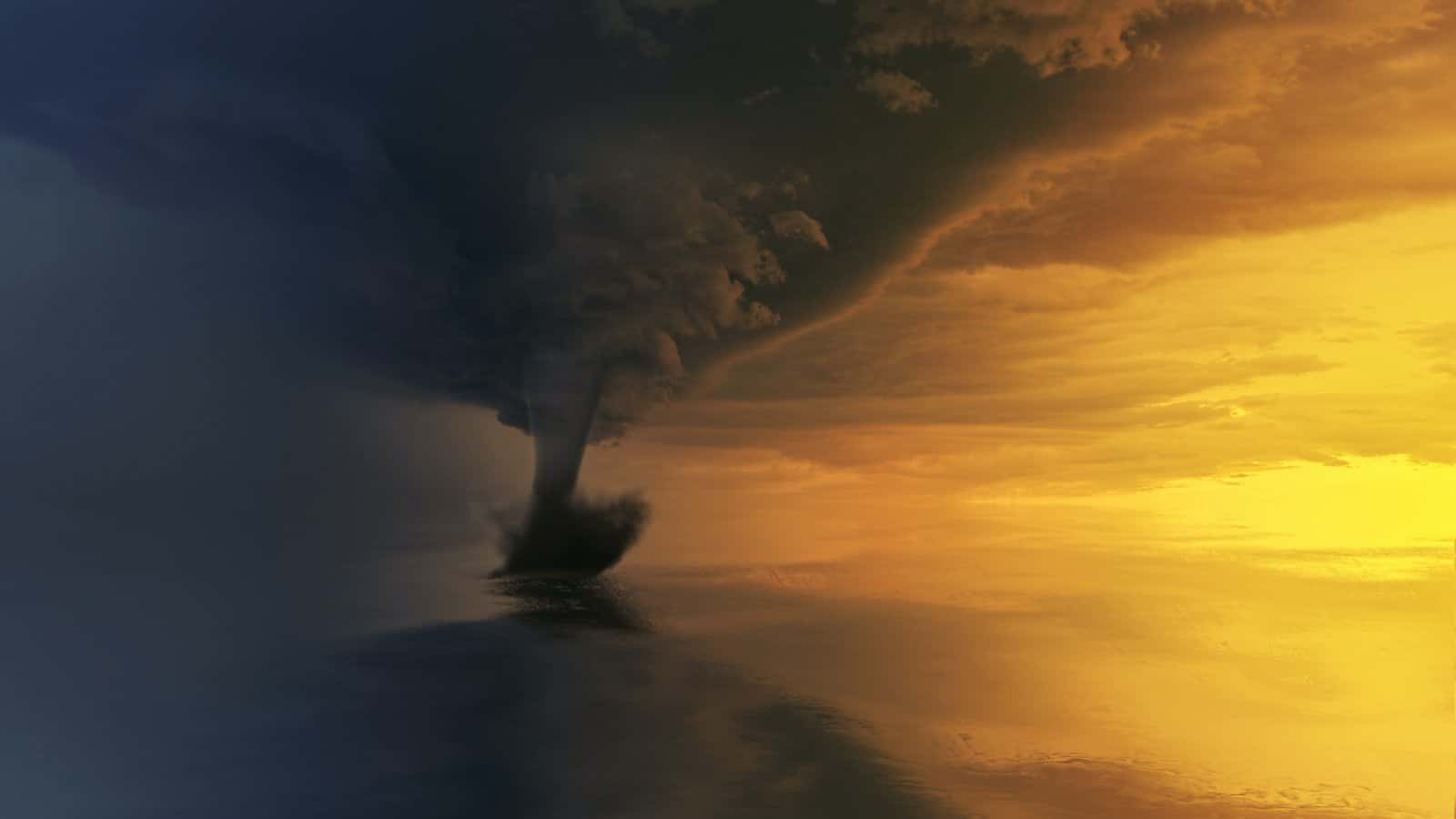
Tsunami Consequences
A tsunami can cause extreme destruction when it strikes land. Destruction is caused by two things: the force of water traveling at high speed, and the large amount of water draining off the land and destroying everything in its way.
The first wave of a tsunami is extremely tall, but it is not the wave that causes most damage. Most of the damage is caused by the huge mass of water behind the first wave because the height of the sea keeps rising fast and floods into the coastal area.
Tsunami waves travel for several miles inland, and they destroy boats, buildings, bridges, cars, trees, telephone lines, power lines and anything else in their way. When a tsunami hits a small island, it leaves it unrecognizable.
Unfortunately, escaping a tsunami is nearly impossible. Hundreds and thousands of people are killed by tsunamis. There is very little warning before a tsunami hits land. People living in coastal regions, towns and villages have no time to escape.
Tsunamis result in instant death either by drowning or by other effects of tsunamis such as collapsing buildings, electrocution and explosions.
Tsunamis not only destroy human life, but they also affect insects, animals, plants, and natural resources. A tsunami changes the landscape.
It uproots trees and plants and destroys animal habitats. Land animals are killed by drowning, and sea animals are killed by pollution if dangerous chemicals are washed away into the sea.
The total financial cost of the tsunami could be millions or even billions of dollars of damage. Infrastructure must be replaced, unsafe buildings must be demolished, and rubbish must be cleared.
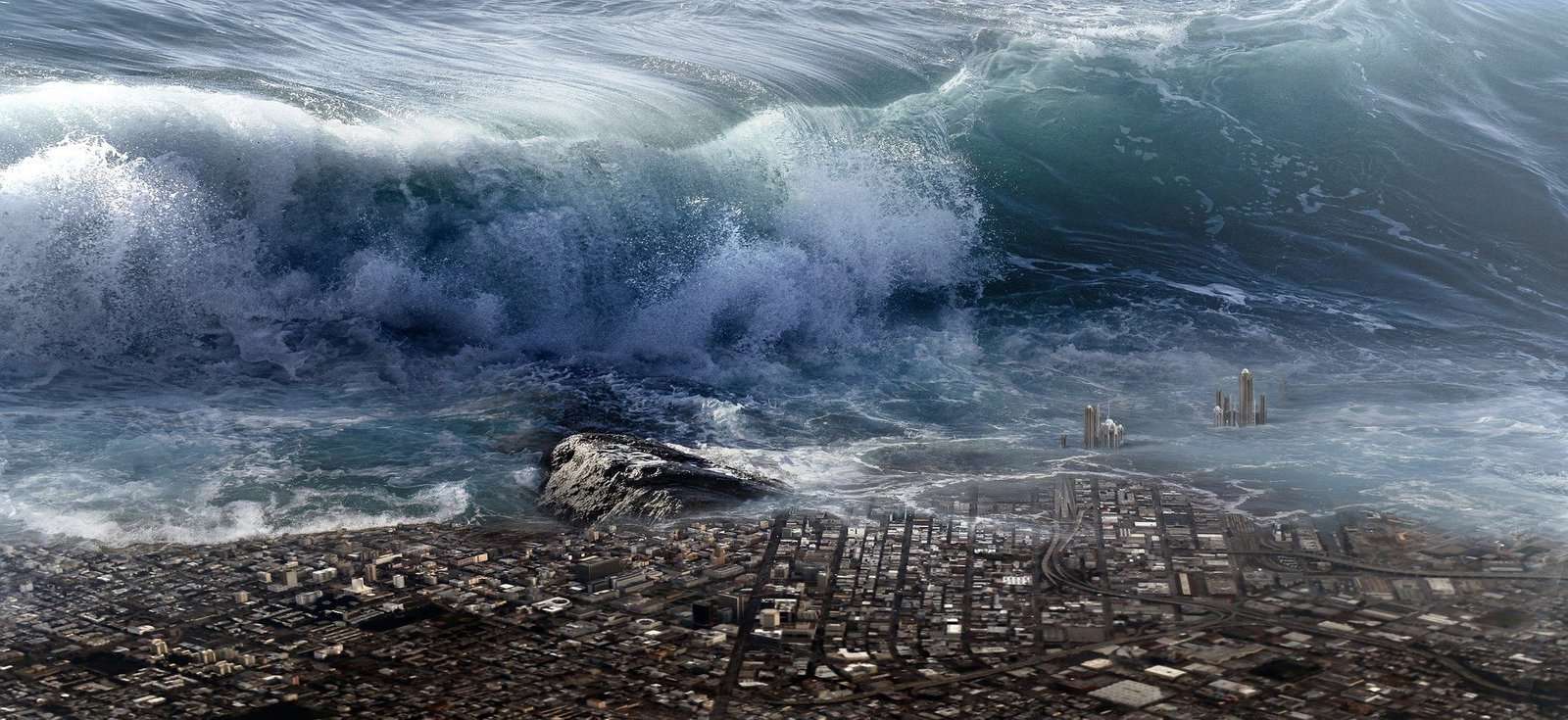
Can You Predict When a Tsunami Is Coming?
Tsunamis cannot be predicted or stopped, but there are ways to defend against them. To save lives, scientists established the Pacific Tsunami Warning System, based in Hawaii, in the USA. The network in this system can track quakes that may cause a tsunami.
However, these waves can race from one side of the Pacific Ocean to the other in less than a day, so people need to be warned in time so that they can head for higher ground.
Sometimes, before a tsunami hits, there are a few natural signs. For example, there may be a hard ground shaking for around 20 seconds near the coast.
There may also be a sudden sea level withdrawal. People can see the ocean floor littered with flopping fish and other sea animals. Sometimes a tsunami may be joined with loud, booming noises.
How to Stay Safe If a Tsunami Hits?
As tsunami’s waves are so huge and fast, it is nearly impossible to escape a tsunami. However, there are some tips that can help you survive a tsunami. Let’s know them.
Preparing Before a Tsunami
If you live near, or regularly visit the coast in a tsunami hazard zone, these preparations would be helpful:
- Learn about the risk of tsunamis in the area.
- Know and practice the evacuation plans and routes.
- Learn the warning signs of tsunami, such as an earthquake, a loud roar from the ocean, abnormally high water-levels, or sudden draining of water showing the ocean floor.
During a Tsunami
If you get caught by a tsunami’s waves, try to follow these tips:
- Try to get to high ground, or try to get on the roof of a tall and sturdy building.
- If you’re right on the coast, there might be a tall tsunami evacuation tower nearby. Look for evacuation route signs and follow them to the tower, then climb to the top.
- If you can’t make it to any type of high ground, climb a tall, sturdy tree.
- If there is no high ground, try to go as far inland from the shore as you can. The further away from the shore you are, the less danger you are in.
- If you are caught and carried by the waves, look for something strong, such as a tree, a door, or a life raft, grab it and hold on tightly.
- Try your best not to swallow any of the water.
Aftermath
Tsunami activity can continue for up to 8 hours or longer. So, here are some tips to follow after a tsunami:
- Stay away from any damaged roads, bridges, or buildings that could collapse.
- Stay away from the coast and on high ground for at least 8 hours.
- Listen to announcements from officials and only move when they say it is safe to do so.
- Damaged power lines can electrically charge the water. So, keep an eye out for downed power lines or any other damaged electrical equipment, and do not wade through any water that they’re touching.
10 Worst and Deadliest Tsunamis in History
1. Sumatra, Indonesia – 26 December 2004
This was the deadliest and the worst tsunami ever recorded. It was as tall as 50 meters, reaching 5 kilometers inland. It started when a powerful earthquake struck beneath the great Indian Ocean.
This tsunami hit about 10 different countries. More than 200,000 people died, and millions were homeless.
2. North Pacific Coast, Japan – 11 March 2011
A massive earthquake beneath the Pacific Ocean caused a powerful tsunami that swept over the east coast of Japan. It reached 10 meters high, traveling at 800 kilometers per hour.
More than 18,000 people were killed, and around 452,000 people were relocated to shelters after their homes were destroyed. This tsunami also damaged roads and railways, and caused a dam to collapse.
It also caused the Fukushima Daiichi nuclear power plant to leak radioactive steam.
3. Lisbon, Portugal – 1 November 1755
A huge earthquake in the Atlantic Ocean caused three huge waves to strike various towns in Portugal and southern Spain. This tsunami was up to 30 meters high in some places.
It caused severe damage to the port city of Lisbon, Portugal. Around 60,000 people were killed. The tsunami also swept debris into the sea, wrecked boats and destroyed homes and buildings.
4. Krakatau, Indonesia – 27 August 1883
The Krakatau volcano erupted multiple times until its walls began to open and sea water poured into the magma. This caused an explosion that destroyed two-thirds of the island.
After the explosion, multiple tsunamis that reached 37 meters high hit Indonesia, India and surrounding islands. This tsunami destroyed the area and killed more than 36,000 people.
5. Enshunada Sea, Japan – 20 September 1498
A powerful earthquake near the Nankai Trough caused huge tsunami waves to hit the coast of Meio Nankai, Japan. The waves reached about 17 meters high.
Homes were flooded and swept away throughout the region, and at least 31.000 people were killed.
6. Nankaido, Japan – 28 October 1707
A powerful earthquake caused a tsunami to hit the Pacific coast of Kyushu, Shikoku and Honshu. The waves reached about 25 meters high. Nearly 30,000 buildings were damaged, and about 30,000 people were killed.
7. Sanriku, Japan – 15 June 1896
After an underwater earthquake that caused a serious displacement of water, a deadly tsunami hit Honshu, Japan. People in Kamaishi and along the Sanriku coast of Honshu felt the quake that happened 120 miles away, but many of them ignored it.
Less than 30 minutes later, waves of about 38 meters high came crashing into town and destroyed many coastal villages. This tsunami caused damage to more than 11,000 homes and killed around 22,000 people.
8. Northern Chile – 13 August 1868
This tsunami was caused by two earthquakes off the coast of Arica, Peru (now Chile). The tsunami waves affected the entire Pacific Rim, reaching up to 21 meters high, and they lasted between two and three days.
The tsunami wiped out the port of Arica. It knocked down buildings and homes, and killed about 25,000 people.
9. Ryukyu Islands, Japan – 24 April 1771
An earthquake caused a tsunami to hit Ryukyu Islands, Japan, and damage a large number of islands. The most affected islands were Ishigaki and Miyako Islands.
The waves reached around 11 to 15 meters high, destroyed a total of 3,137 homes, and killed nearly 12,000 people.
10. Ise Bay, Japan – 18 January 1586
A powerful earthquake caused a tsunami to hit Ise Bay, Japan. The waves reached about 6 meters high, causing damage to many towns. When the earthquake first occurred, a fire broke out in the town of Nagahama, and it destroyed half of the city.
In general, the Ise Bay tsunamis caused more than 8000 deaths and a large amount of damage.
Interesting Facts about Tsunamis
- Most tsunamis happen within the Ring of Fire, a zone in the Pacific Ocean where earthquakes and volcanic eruptions frequently occur.
- Although tsunamis are sometimes called tidal waves, they have nothing to do with the ocean’s tides.
- A tsunami may be caused by a giant meteor in the ocean, but this rarely happens.
- Tsunamis occur most commonly in Japan, and lately they have been spreading across many other countries.
- Tsunamis can travel almost as fast as a jet plane, and they can cross the entire ocean in less than a day.
- A Tsunami can be even less than 30 centimeters in height and can pass off unnoticed.
- People plant palm trees with strong trunks onshore because they are known to survive a tsunami.
- Tsunami can poison the land with much salt, causing people to die out of hunger and disease after the tsunami is gone.
Why not check out some more natural disaster articles: Earthquakes, Hurricanes, Volcanoes, and Tornadoes.
Why not subscribe to our LearningMole Library for as little as £1.99 per month to access over 1400 fun educational videos.
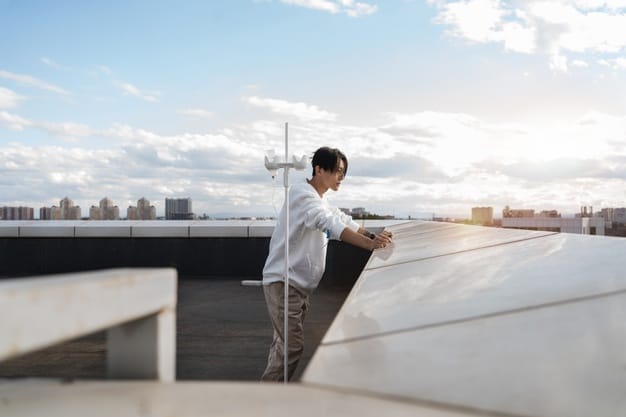


Leave a Reply